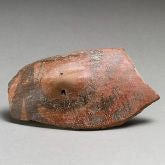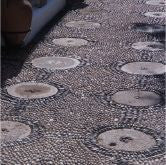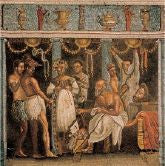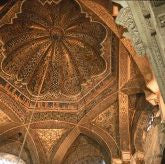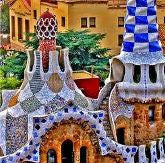History of mosaics
|
Neolithic Period 4000 BCMosaic patterns first surfaced through the use of terracotta cones being applied point first onto structures as a means of decoration. They were colorful and did not follow a defined form. |
Bronze Age 800 BCAfter being used for decorative purposes, mosaics appeared through – unstructured - pebbled pavements. |
Hellenic Period 400 BCMosaic art in Greece took a more structured shape. Greeks began creating art using pebbles through the depiction of geometric patterns and detailed scenes of people and animals. |
Axial Period 200 BCGreeks began manufacturing pieces known as ‘tesserae’ in order to add more detail and color to their mosaic patterns. Tesserae allowed them to mirror paintings using the aforementioned patterns. |
Roman Empire 27 BCWith the rise of the Roman Empire, mosaic patterns depicted gods, intrinsic geometric designs, and domestic settings. This expansion highly influenced the mosaic art we know today. |
|
Byzantine Empire 5th centuryEastern influences became visible in mosaic patterns and mosaic designs. The use of, Smalti, glass tesserae sourced from northern Italy, proved to be popular in the Byzantine period. Smalti gave an entirely new texture and feel to the mosaic patterns created; they were cut from thick sheets of colored glass and backed by a reflective silver or gold leaf. Application of Smalti was very meticulous; Byzantines made sure to install their tiles at correct angles in order to allow light reflection and refraction. |
Islamic Empire 8th CenturyIslamic mosaic art did not focus on figurative representations as the Byzantine art did; instead it focused on geometric and mathematical patterns. Glass, stone, and ceramic tiles were used to create those patterns. The most prominent Islamic mosaic art can be seen at the Great Mosque of Cordoba and the Alhambra Palace in Spain. |
Byzantine Style 19th CenturyMosaic wall art saw a revival throughout the 19thcentury after experiencing a decline through the middle ages. The Byzantine style surfaced once again and can be seen in landmark monuments around the world like the Westminster Cathedral in London and the Sacre-Coeur in Paris. |
Art Nouveau 20th centuryThe Art Nouveau movement of the 20thcentury saw a pursued interest in mosaic patterns where new techniques were introduced, one of which is the use of purpose made and waste tiles to cover large surfaces of buildings. Fine examples of this movement can be seen by works of the famed Antoni Gaudi and Josep Maria Jujol. |
Modernity 21st centuryNow-a-days the concept of mosaics treads on a fine line that diffuses between art and handicraft simply because mosaics can be used to decorate a space as well as functionalities like flooring and ceiling. The field is full of new approaches, techniques and ideas. Organizations such as the British Association for Modern Mosaic and The Society of American Mosaic Artists exist to promote mosaic art. |

